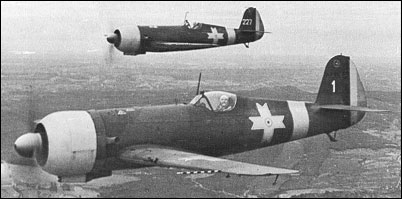|
| Designed as a successor to the licence-built P.Z.L.
P.24E by a team comprising Ion Grosu, Ion Cosereanu,
Gheorghe Zotta and Gheorghe Vallner, the I.A.R.80
single-seat fighter was flown in April 1939. The prototype
was powered by a 900hp I.A.R.-K 14-II C32 14-
cylinder air-cooled radial based on the Gnome-Rhone
14K Mistral-Major and its armament consisted of two
wing-mounted 7.92mm FN-Browning guns. The
series-production I.A.R.80 appeared in the spring of
1940, and featured a 52cm increase in wing
span, a 74cm increase in fuselage length,
greater fuel capacity, an aft-sliding cockpit canopy, an
armament of four 7.92mm guns and a 930hp I.A.R.-K
14-III C36 engine. The series model also discarded the
tailplane bracing struts featured by the prototype. The
I.A.R.80 achieved operational capability on 14 January
1941 with Flotilla 2 Vinatoare of the Royal Air Forces of
Romania (Fortelor Aeriene Regal ale Romania), or
FARR. The 50th and last of the initial series was fitted
with an extra pair of guns, this six-gun armament being
standardised for subsequent aircraft, which were designated I.A.R.80As, these also having racks for two
50kg bombs and being powered by the
1,025hp I.A.R.-K 14-1000A engine. Ninety I.A.R.80As
were followed by 50 I.A.R.80Bs, with an armament of
four 7.92mm and two 13.2mm guns, the 21st and subsequent
aircraft of this batch having a further increase
in wing span of 48cm and provision for underwing
drop tanks. Manufacture of the pure fighter version
of the basic design was completed with 50
I.A.R.80Cs - originally laid down as I.A.R.81Bs, which
see - with 20mm Ikaria cannon replacing the 13.2mm
weapons and reintroducing the tailplane bracing
struts. A small number of I.A.R.80s remained in Romanian
service until late 1949, after which survivors with
the lowest hours were rebuilt as I.A.R.80DC tandem-seat
dual-control advanced trainers.

| MODEL | I.A.R.80C |
| WEIGHTS |
| Take-off weight | 2980 kg | 6570 lb |
| Loaded weight | 2200 kg | 4850 lb |
| DIMENSIONS |
| Wingspan | 11.00 m | 36 ft 1 in |
| Length | 8.97 m | 29 ft 5 in |
| Height | 3.52 m | 12 ft 7 in |
| Wing area | 16.50 m2 | 177.60 sq ft |
| PERFORMANCE |
| Max. speed | 550 km/h | 342 mph |
 | A three-view drawing (1280 x 958) |
| lxbfYeaa, e-mail, 07.11.2025 02:32 20 reply | | lxbfYeaa, e-mail, 07.11.2025 02:32 20 reply | | e, e-mail, 07.11.2025 00:26 e reply |
| sven, 25.12.2015 22:45 Gabriel, amazing we have similar traditions in England which aim to destroy the entire aircraft industry. We are almost there.. Happy Christmas. reply | |
| | Gabriel Galateanul, e-mail, 24.12.2015 21:39 Unfortunately all those good looking airplanes were scrapped after the war in a ''good'' romanian tradition to destroy our history. During the WW2 existed some attempts for further developing but because of the high level of coruption (another romanian ''tradition'') those attempts remained on paper. reply | | sven, 29.09.2015 22:58 That is a good looking aeroplane. Any one know of any survivors? reply | | Heldmyer, e-mail, 04.08.2010 04:49 Spectacular plane! Love the canopy. reply | | Dragos Manuel, e-mail, 21.08.2008 14:18 The Romanian wright spelling of FARR is Fortele Aeriene Regale ale Romaniei, and PRR (People Republic of Romania) is Republica Populara Romana.
IAR 80 have a max. speed of 510 Km /h, latter versions didn't achieve 500 km /h because of the heavy weight and the poor performance of the engine reply |
|
Do you have any comments?
|
| 
COMPANY
PROFILE
All the World's Rotorcraft
|









20
reply